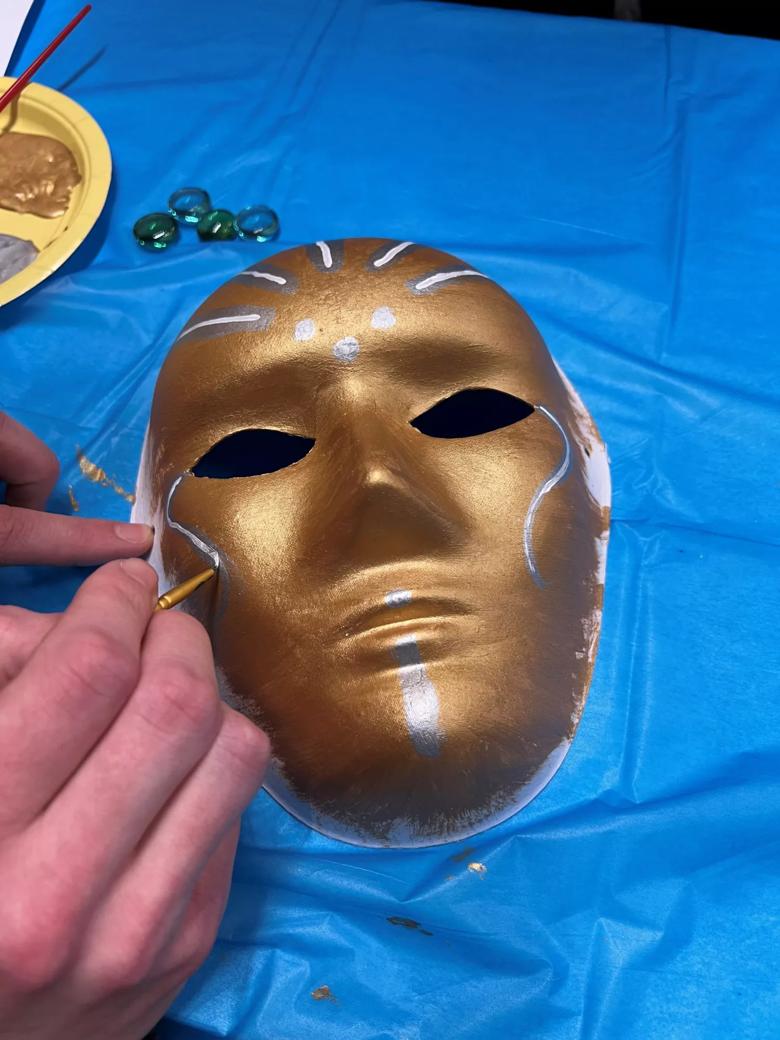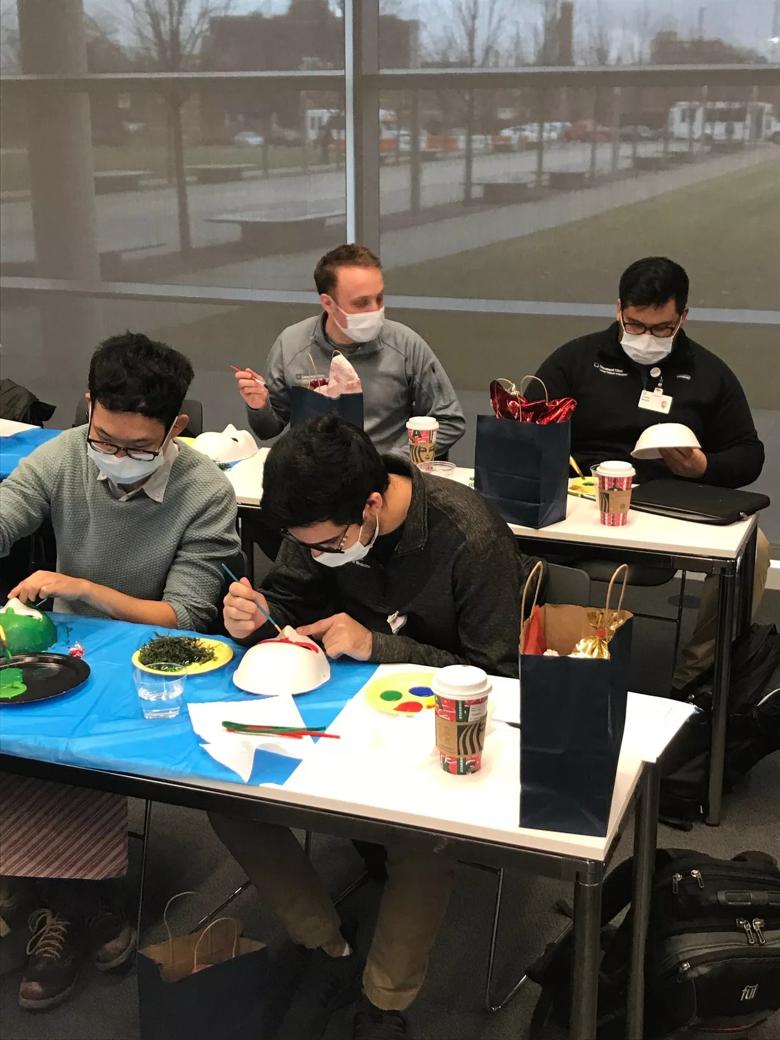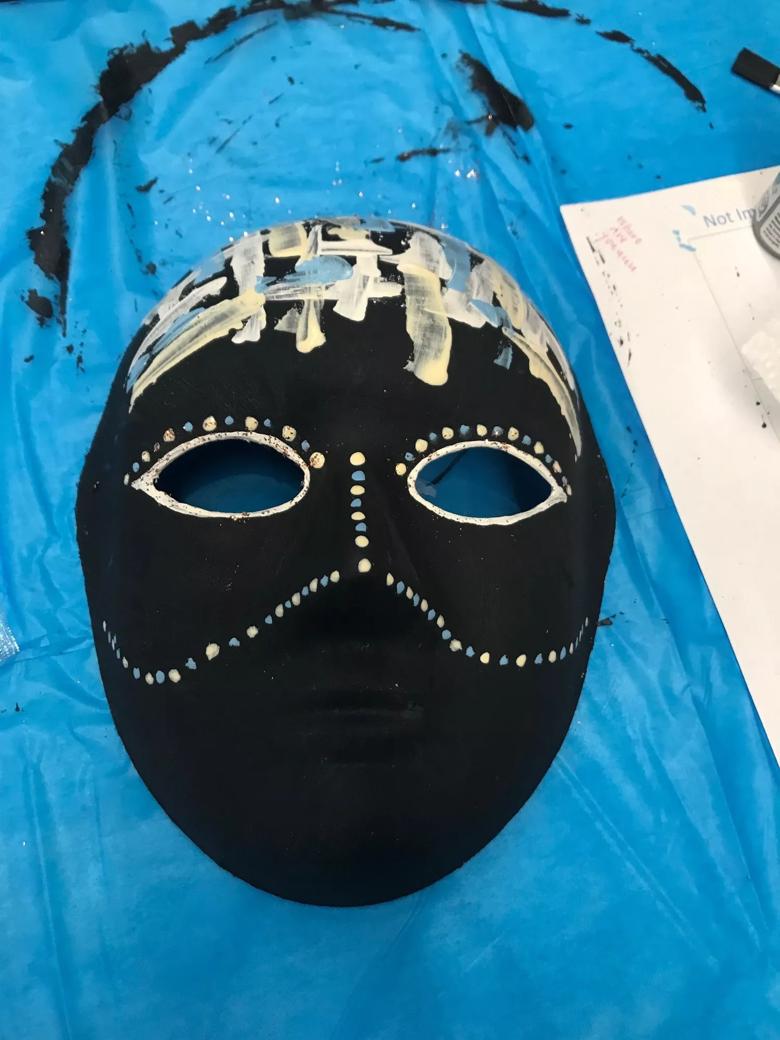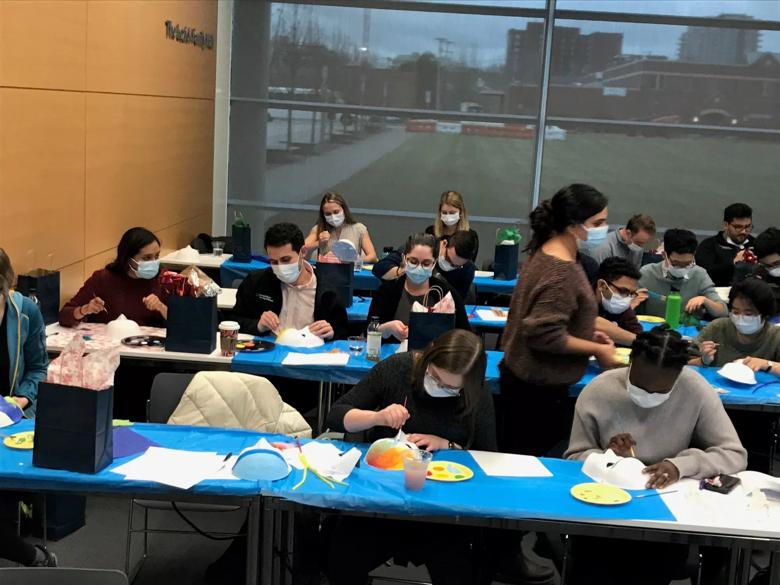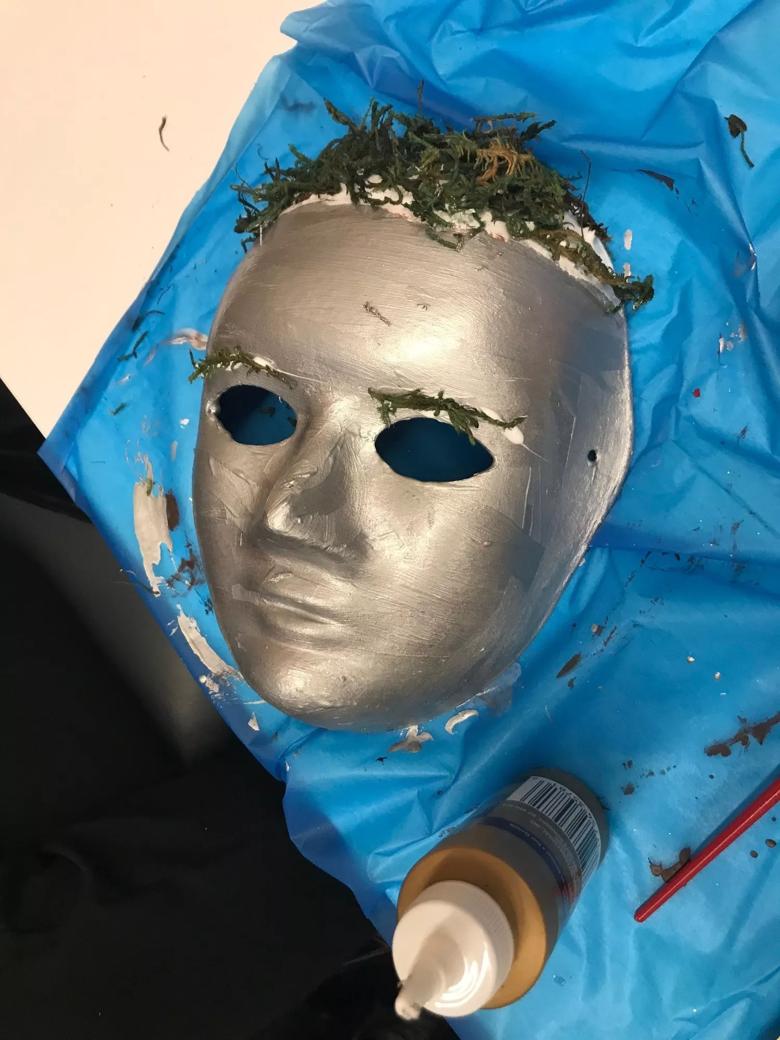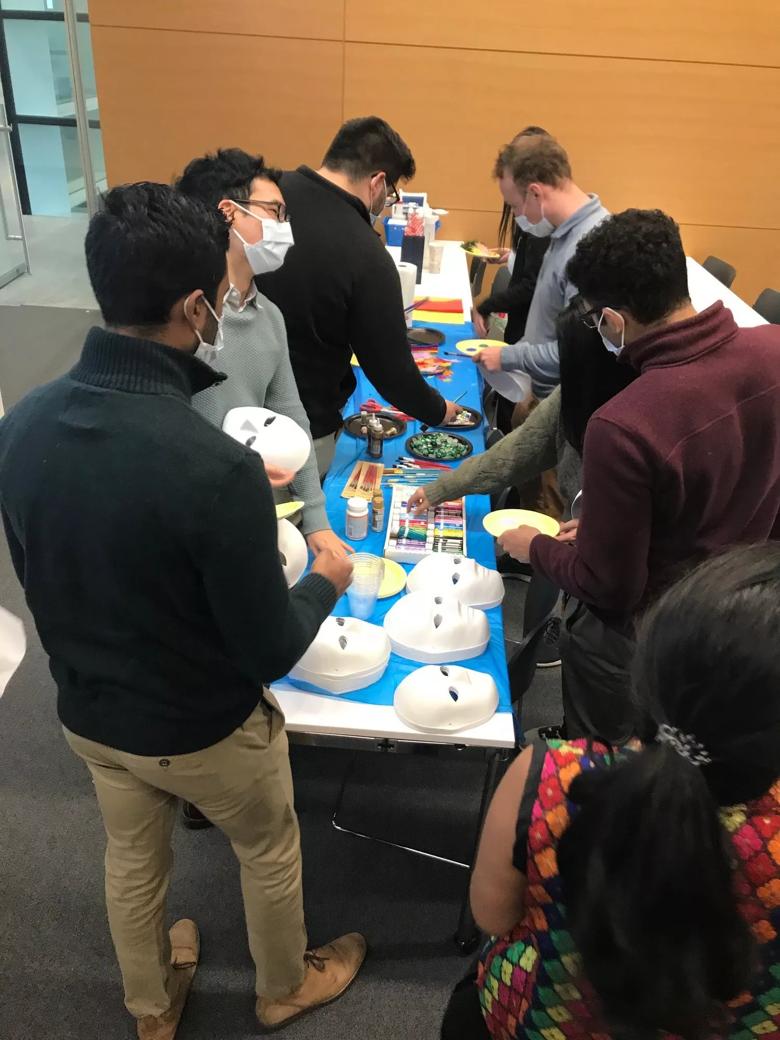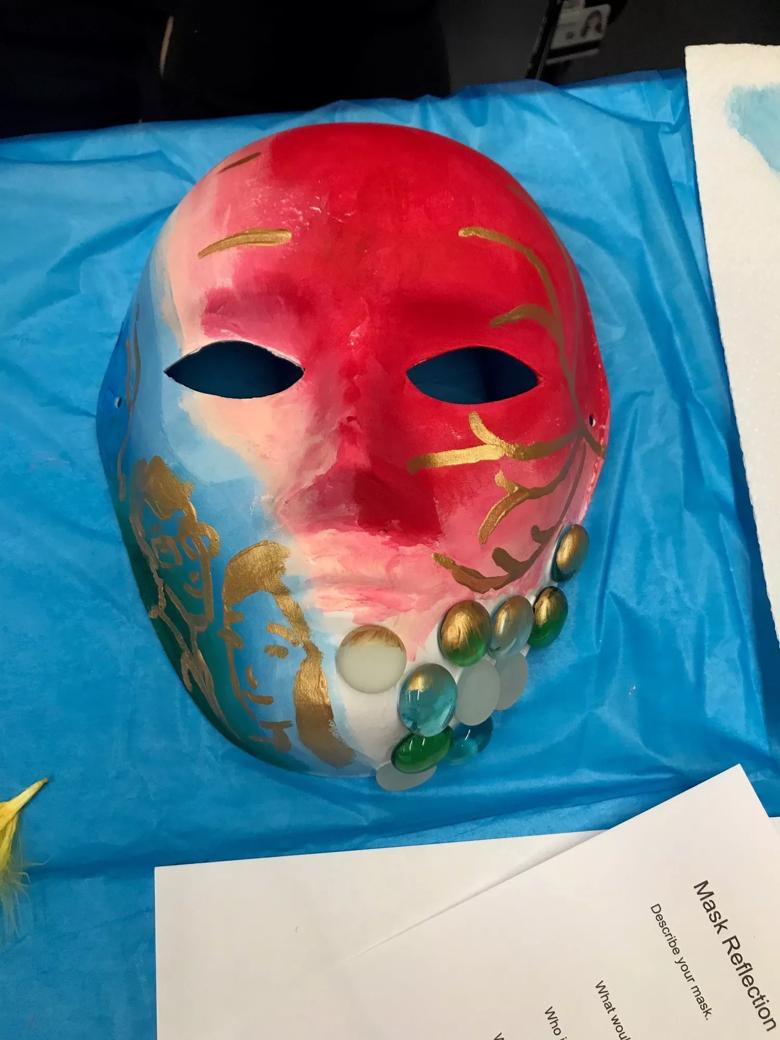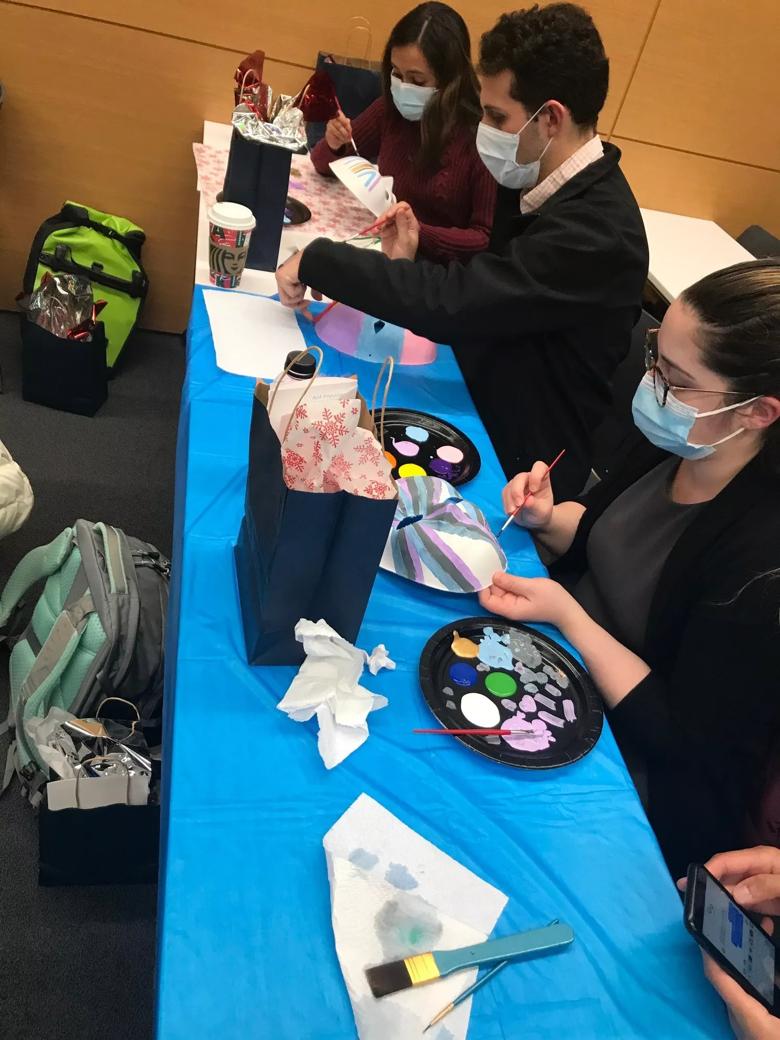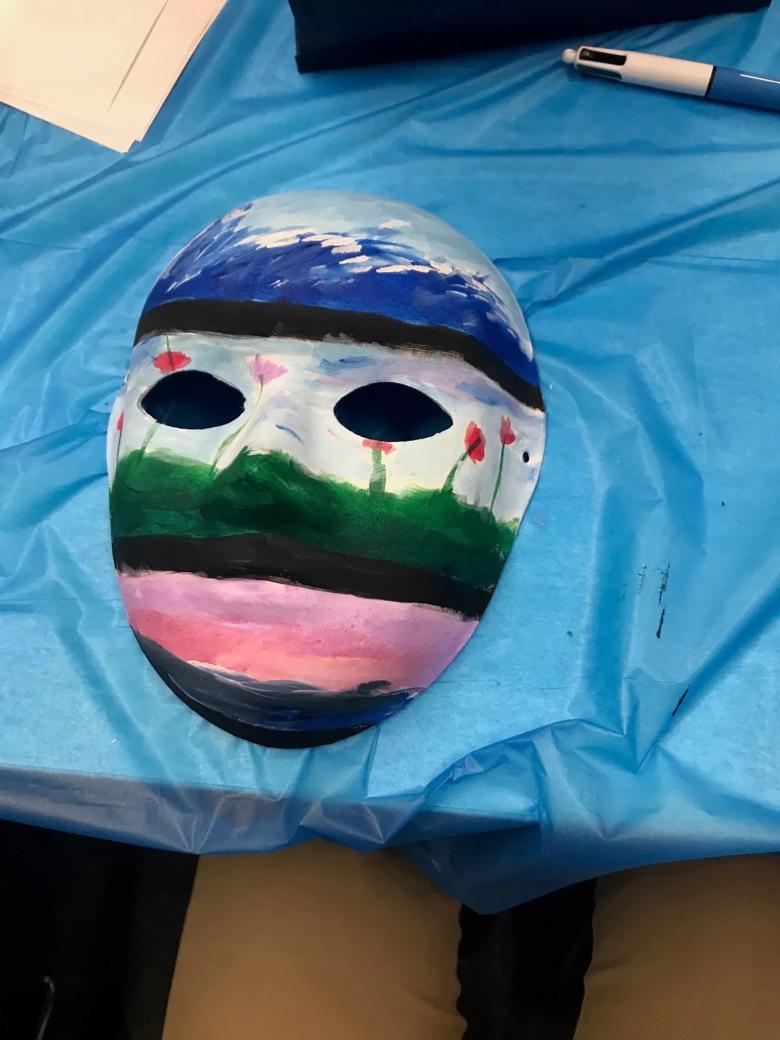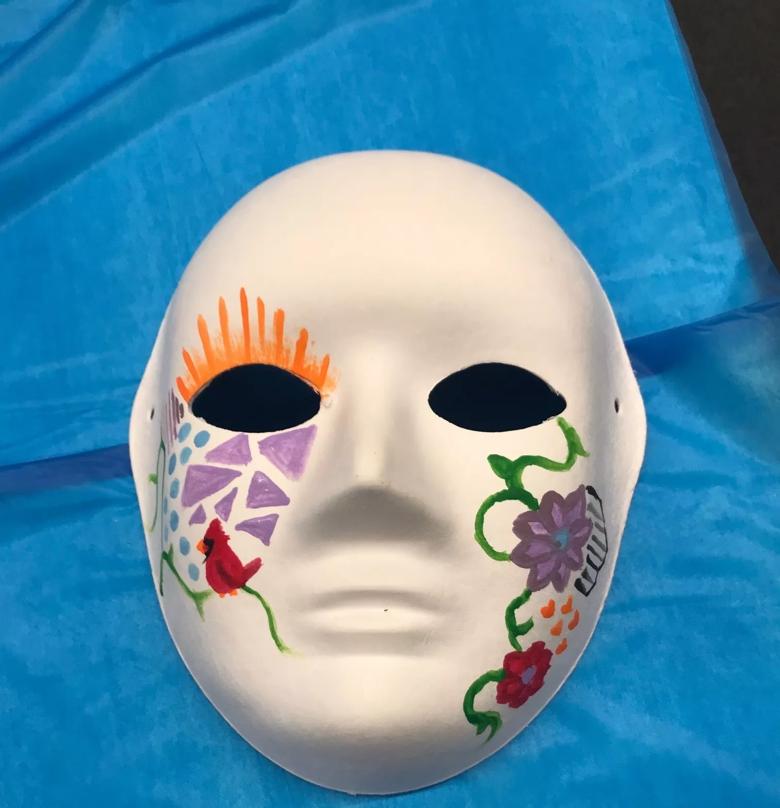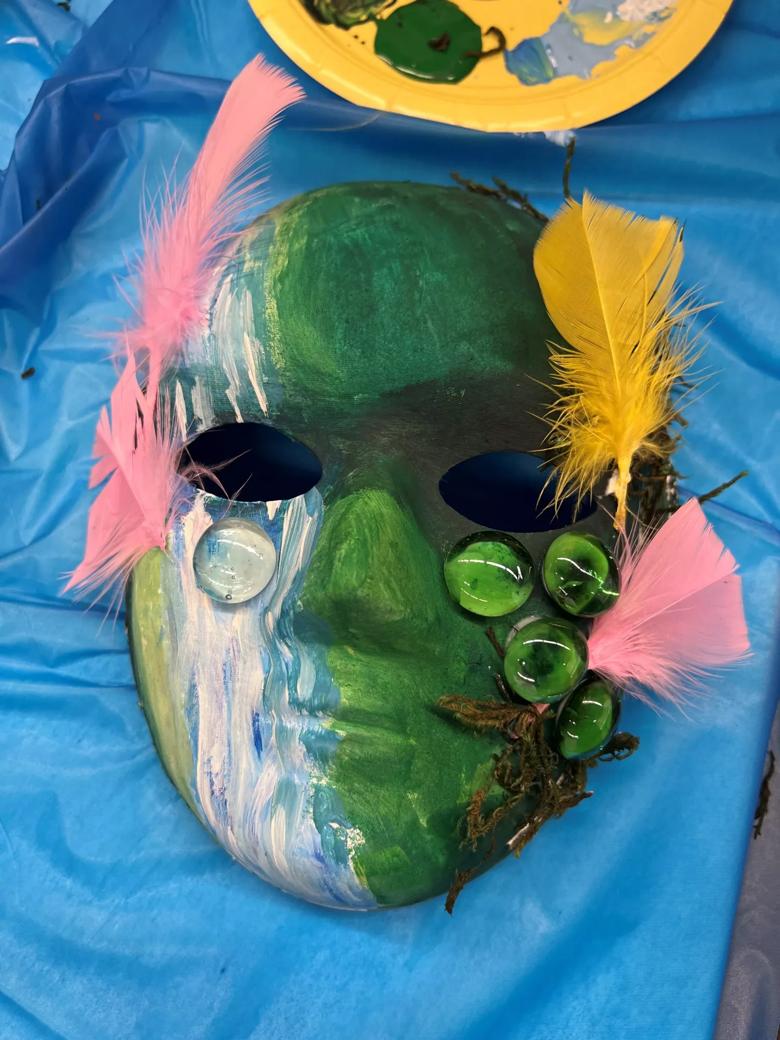Hands-on wellness session allows students to explore identity

During medical school, much emphasis is given to professional identity development; specifically, how the students make the transition from learner to physician, incorporating the ability to reflect, empathize, work in teams, deliver care with compassion and integrity, and more. Yet one’s overall identity comprises many aspects of self, including professional identity, and how they intersect. This idea — the intersection of identities — was explored in a recent wellness activity for third-year students led by Cory Chevalier, MD, Assistant Professor of Medicine and Director of Wellness for CCLCM, and Katherine Burke, MFA, Clinical Associate Professor of Medicine and Associate Director of Art and Practice of Medicine 3.
“The students have been working so hard, and we wanted to give them some time to get their head above water,” says Dr. Chevalier. “We essentially wanted to say, ‘Let’s focus on you.’”
To start, Dr. Chevalier asked the students how we know who we want to be and the difference between intentional choice versus finding themselves somewhere they did not expect. He shared some guidance for thinking intentionally about identity such as:
The students were encouraged to create a personal mission statement, which can provide clarity of purpose and can be helpful for making major decisions. Dr. Chevalier then shared another tool to help students focus on those important but longer-term parts of who they are. He shared a matrix that plots tasks according to urgency and importance. The tasks in quadrant two, which are important but not urgent, were highlighted, as these are the tasks that are easy to ignore but most important in the long term. Focusing on the personal quadrant two activities is critical to accomplishing one’s personal mission statement, and protecting time for these activities is key and a big part of keeping track of one’s sense of self.
The session was intentionally designed to allow students to move at their own pace and take time to explore who they are, giving them the tools to use later rather than challenging them to complete all the activities then and there.
“These are such big topics. The idea is that they should take time to explore them. There’s no rush,” says Dr. Chevalier, who lastly led the students through a reflection of their personal life (life shared with family/friends), public life (life shared with all) and private life (where heart and true motives are) to determine where these aspects intersect and how they combine to create identity.
The students welcomed the interactive, low-stress activity, especially because they are meeting again in person and eager to engage in group activities after connecting virtually for so long.
Katherine, who has a background in theater and experience with mask-making and performing, led the mask-making activity.
“There’s something magical about making and wearing masks,” says Katherine. “Masks are a great metaphor for self: the self you put out to the world and the self that you hide. Mask-making is an effective, evidence-based way to reflect on your identity.”
Armed with paper mâché masks, acrylic paints, paintbrushes, glue, collage materials and other craft supplies, the students set to work decorating their masks. Some students embellished their masks with glass pieces, and others painted beautiful scenes. Some masks were literal representations of the students, and others were more symbolic.
“The mask-making activity allowed them the freedom to explore their creativity, and I think they were surprised at how much they enjoyed it,” says Katherine.
The exercise also allowed the students to reflect on their identity without having to be openly vulnerable. They were invited to talk about their masks only if they wished to.
“This mask-making event was a much-needed chance for me and my classmates to decompress and be creative,” says Samantha Stallkamp (’24). “It was so wonderful to see what things my classmates came up with when designing their masks. This event also served as quality time together.”
Based on the positive feedback, Dr. Chevalier and Katherine plan to hold the event again next year.
“Everyone embraced the activity and enjoyed their time crafting something uniquely theirs,” says Katherine. “The masks all turned out so beautiful and diverse.” A true reflection of the students themselves.
